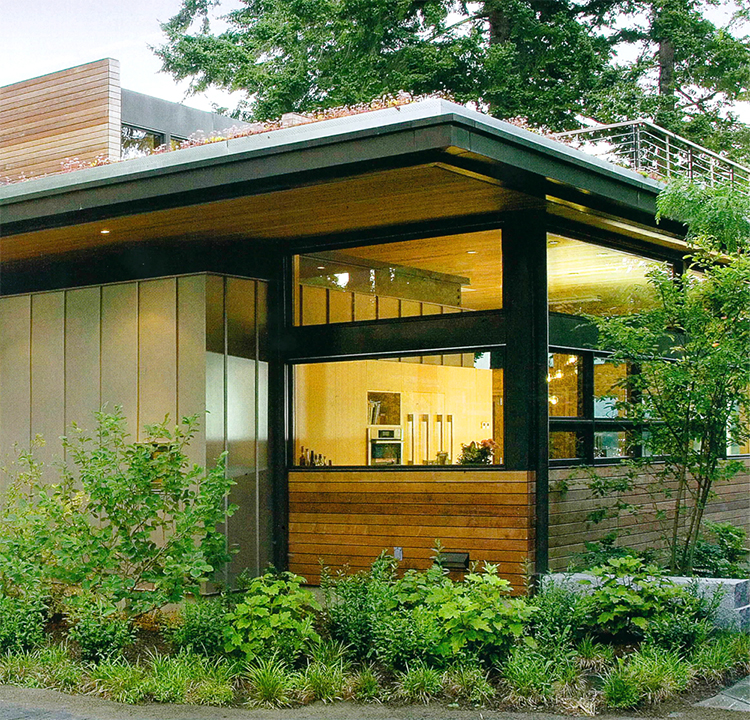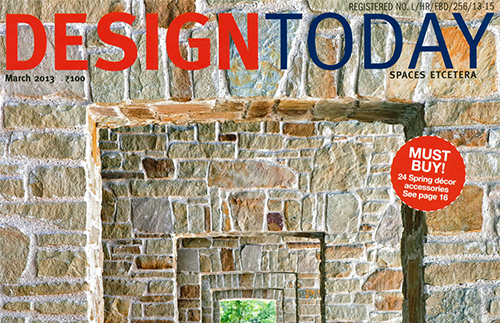The first LEED Platinum residence outside the city of Seattle, the Ellis’ home is a testimony that sustainability doesn’t have to come at the cost of style, elegance, and luxury. The entire project was conceived by the architects from Coates Design, keeping durability, aging and recyclability in mind.

LEED platinum Residence, Seattle
Owners Ed and Joanne Ellis had a clear vision when setting out to build their dream home—they wanted their house to raise the bar for energy producing housing while maintaining aesthetics and livability. Through their house, they wanted to tell the world that sustainability can be achieved without compromising a modern aesthetic lifestyle. The architects from Coates Design met the challenge through a three-pronged strategy of designing flexible living spaces, using local materials and a multitude of energy-saving technologies and sustainable practices. They conceived the entire project with durability, aging and recyclability in mind. Perched high upon the Yeomalt Bluff, commanding a 180-degree view of the city of Seattle, the house’s cool and contemporary design, and elegant, luxurious spaces immediately grab attention. Once inside, you realize that much of the house also overlooks the shipping channels, evoking memories of the owners’ long stint with the shipping industry. Some rooms overlook the vast gardens outside. Creating space that has multiple functions means an overall smaller footprint. That is why sliding and bi-folding doors transform smaller spaces into larger gathering spaces. For instance, large bi-fold doors allow the living and dining rooms to come together and seamlessly open up to the exterior terrace, and for the roof to become a vegetated garden patio the team faced a major challenge.
During the design phase—how to obtain efficient, clean energy in a rainy marine climate on a small forested lot. Solution? The use of solar and geothermal collectors that ensure continuous, clean energy production. And simple heat-recovering technologies cut down the Ellis’ energy demand by a significant amount. For instance, take the window fenestrations, which play a critical role in passively heating the house. South-facing windows and overhead skylights warm the walls and floors, cozying up the house even on cold winter days. The operable skylights at the core of the house provide efficient natural ventilation and fresh, clean air throughout the two-story structure.
A large east-west CMU ‘spine’ forms a central thermal mass core for the house. This massive wall cuts down temperature swings and is aligned with the operable skylights to take advantage of the cooling techniques. The wall doubles up to divide the private and public spaces. The north, the private portion of the house, is much more enclosed for climatic and privacy reasons. To the South, the glassy public spaces have abundant natural light and views. The east, which is the water side of the house, has windows and doors that open to let in cool breeze. Thermal massing, along with the use of solar water heaters, photovoltaic cells and geothermal heat ensure that the Ellis’ use 70 percent
Less energy than an average North American home. To ensure smaller eco-footprint during the construction phase, the team deconstructed the existing structure on the site, diverting 98 percent of its material from the landfill. The contractor tracked all waste and recyclable material to provide a 75 percent landfill diversion rate. Interior trim and wood for the stairs and benches came from fir trees that had fallen and were sourced from a neighbor’s property.
The home is wrapped with native, sustainable, landscaping, using drought-tolerant indigenous vegetation and previous pavers to prevent soil erosion and maintain the natural habitat. A large rain-garden is integrated into the west side of the site, providing an on-site eco-system and habitat as well as collecting and filtering storm water runoff. Care was taken during construction to reduce, contain, and treat any runoff pollution.
The Ellis’ residence is a high performance building that maintains its functionality and livability. As the Ellis’ themselves say, “We don’t have to compromise here. We live in luxury.”
Full article found at:
“Green Chic,” Design Today, March 2013. (View PDF version)


